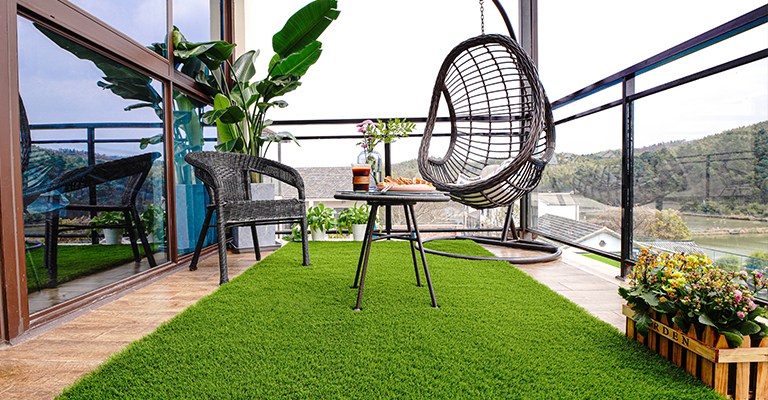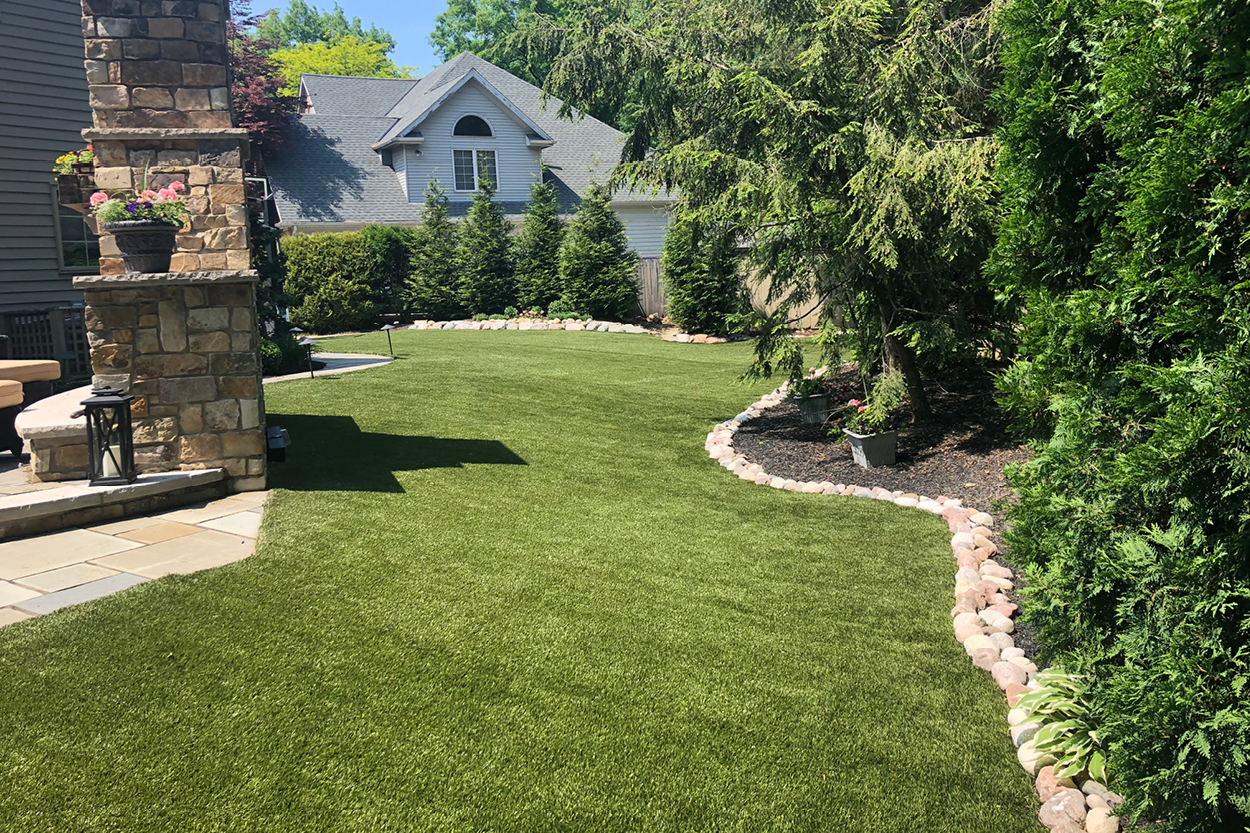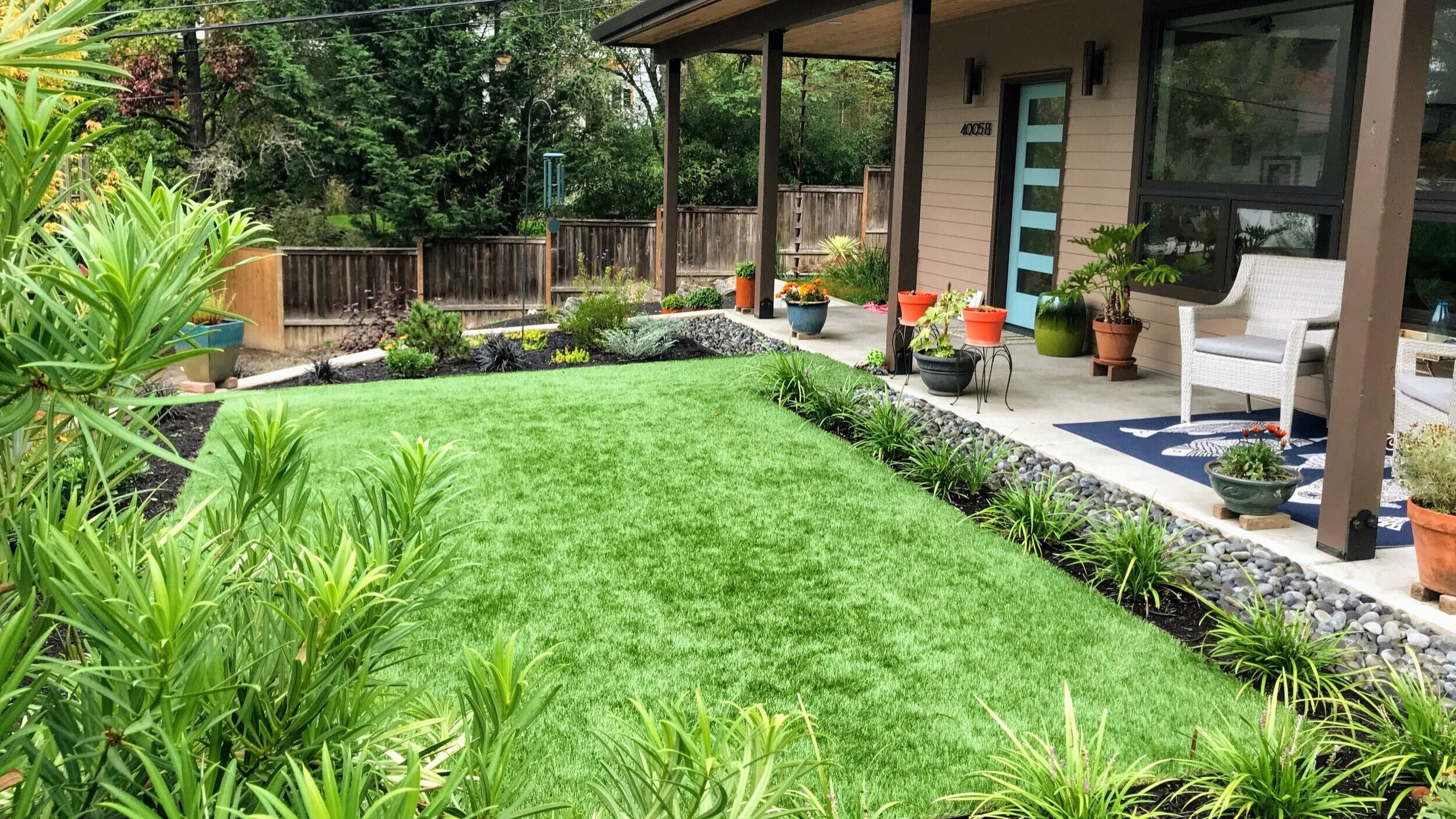Tailored Turf Installation Phoenix AZ for Homes, Companies, and Recreational Spaces
Tailored Turf Installation Phoenix AZ for Homes, Companies, and Recreational Spaces
Blog Article
Delve Into the Environmental Perks of Opting for Synthetic Grass Solutions
The adoption of synthetic grass remedies presents a compelling chance to resolve pushing ecological difficulties. By substantially reducing water use and decreasing the application of unsafe chemicals, these alternatives not just advertise lasting landscape design yet also secure local communities. The lower carbon impact connected with lowered upkeep tasks contributes to an extra lasting approach to land administration. However, the implications of these benefits expand past plain conservation efforts, questioning about their long-term effect on habitat conservation and overall ecological equilibrium. Checking out these dimensions reveals a complicated interplay worth thinking about.
Water Conservation Perks
One of the most substantial benefits of fabricated grass is its capability to save water. In contrast, man-made grass does not need watering, substantially lowering the general need for water resources.
By eliminating the requirement for routine watering, man-made grass adds to sustainable landscape techniques and assists alleviate the ecological impact of extreme water intake. The preservation of water expands to the reduction of overflow, which can lead to soil disintegration and waterway contamination.
Furthermore, the installation of synthetic grass allows house owners and districts to allot water sources much more successfully, focusing on important uses such as drinking water and agriculture. The shift in the direction of man-made grass not only advertises responsible water use but likewise lines up with broader ecological goals targeted at protecting all-natural sources.
As communities progressively focus on sustainability, the water preservation advantages of synthetic grass offer an engaging situation for its adoption in property and industrial landscaping tasks.
Decreased Chemical Use
The change to synthetic grass significantly lowers the reliance on chemical treatments typically utilized in all-natural grass maintenance. Typical turf monitoring generally includes the application of chemicals, herbicides, and fertilizers to advertise growth and control parasites. These chemicals can posture dangers to human health, local wildlife, and the environment, adding to soil and water contamination.
On the other hand, synthetic grass eliminates the need for these unsafe substances. When mounted, it calls for very little upkeep, largely containing routine cleansing and seldom infill replenishment. This decrease in chemical usage not only profits the prompt atmosphere yet likewise adds to wider environmental security. By reducing the release of artificial compounds into the environment, synthetic grass promotes much healthier soil and water systems.
Furthermore, the absence of chemical runoff related to synthetic grass installations helps shield regional waterways from contamination, supporting water life and keeping biodiversity. Arizona artificial turf. As areas increasingly focus on sustainable methods, going with synthetic grass offers a viable service that aligns with environmental conservation objectives. Through this shift, residential property proprietors can delight in rich eco-friendly areas without jeopardizing environmental health and wellness, paving the way for a more lasting future
Reduced Carbon Footprint

Additionally, the installation of synthetic grass can cause substantial water preservation. All-natural grass need significant quantities of water for irrigation, which not just contributes to the carbon impact connected with water extraction and treatment however likewise stress neighborhood water sources. In comparison, synthetic grass needs very little upkeep, calling for no watering, thereby substantially reducing water resource use and its connected power prices.
In addition, the long life of synthetic grass adds to its lower carbon influence. With a lifespan of approximately 15 years or even more, the need for frequent substitutes is lessened, resulting in less waste and reduced energy usage in production and disposing of standard lawn options. Overall, fabricated grass offers a lasting alternative for ecologically conscious landscape design.
Habitat Conservation
Environment conservation is a vital factor to consider in the discussion over landscaping options, especially when contrasting synthetic grass to natural grass. All-natural yard lawns often need substantial maintenance, including the use of plant foods, chemicals, and herbicides, which can detrimentally impact local ecosystems. These chemicals can leach right into the dirt and rivers, harming indigenous plants and fauna and interrupting regional habitats.
On the other hand, synthetic turf offers a possibility to decrease the ecological impact of landscaping. By choosing synthetic yard, property owners can decrease the disturbance of all-natural habitats connected with standard yard care practices. Artificial lawn removes the requirement for harmful chemicals, thus shielding nearby wildlife and keeping the integrity of surrounding ecosystems. The installment of synthetic lawn can lead to the conversion of previous lawn locations right into more biodiverse landscapes, such as pollinator gardens or native plant locations, which can support regional wildlife.
Inevitably, the shift to synthetic grass not just saves water and decreases maintenance efforts yet likewise promotes click now an extra harmonious connection between human tasks and the native environment, promoting environment conservation at the same time.
Long-Term Sustainability
Lasting sustainability is a crucial variable in assessing the benefits of synthetic grass over standard yard lawns. One of the most substantial benefits of synthetic grass is its durability; it can More Info last up to 15-20 years with marginal maintenance, whereas natural yard calls for regular reseeding and substitute. This durability minimizes the requirement for consistent resources, such as water, fertilizers, and chemicals, which are vital for preserving a healthy grass lawn.
In addition, synthetic grass adds to a decrease in carbon exhausts connected with lawn treatment equipment. Typical lawns often need gas-powered lawn mowers, leaners, and blowers, every one of which contribute to air pollution. Artificial turf companies phoenix. In contrast, synthetic grass removes the need for such devices, advertising a cleaner atmosphere
Additionally, the manufacturing of synthetic grass increasingly utilizes recycled products, boosting its sustainability account. As suppliers take on eco-friendly techniques, the ecological footprint of synthetic grass proceeds to decrease.

Verdict
The adoption of synthetic grass options provides considerable ecological benefits, consisting of substantial water conservation, minimized reliance on damaging chemicals, and a lower carbon footprint. Artificial turf help in preserving all-natural environments by minimizing land disturbance and promoting long-term sustainability through the use of durable products. Collectively, these aspects highlight the potential of man-made grass to add positively to ecological wellness and supply a viable option to traditional landscape design methods in a significantly resource-conscious globe.
In comparison, synthetic grass does not need watering, substantially lowering the total need for water resources. By minimizing the launch of synthetic compounds right into the environment, man-made grass advertises healthier soil and water systems.
Additionally, the installment of artificial turf can result in substantial water preservation. In comparison, fabricated turf requires marginal upkeep, needing no watering, thus significantly lowering water usage and its associated energy expenses.

Report this page